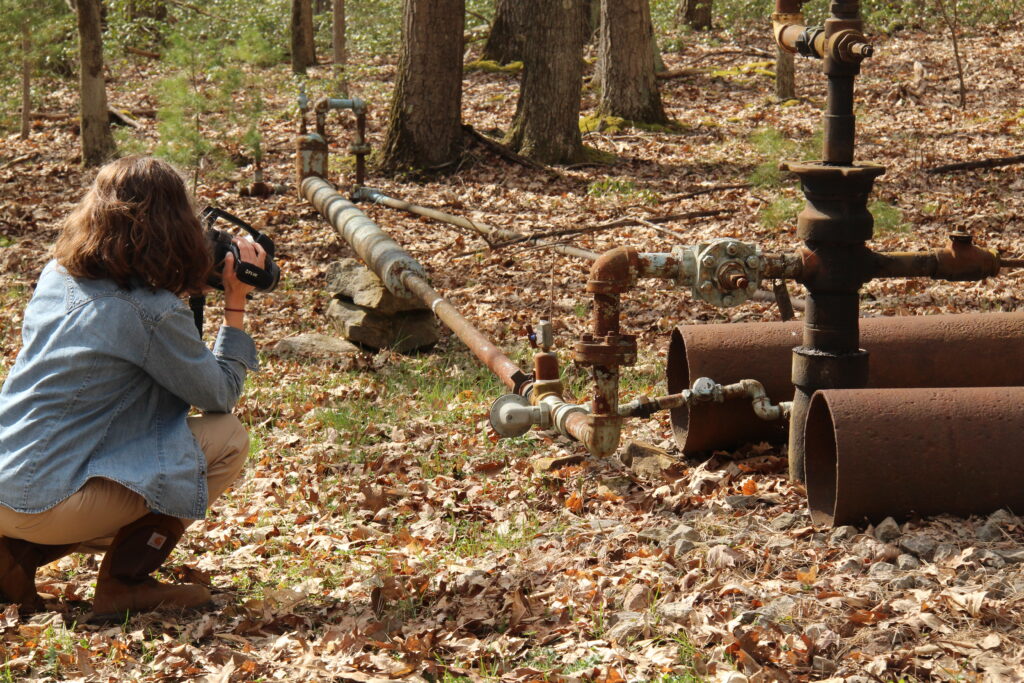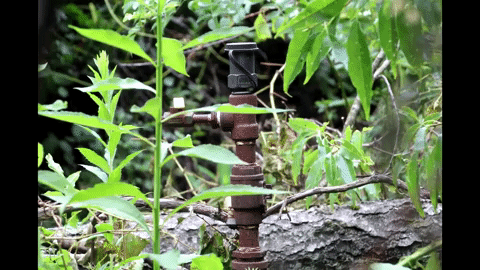|
Getting your Trinity Audio player ready...
|

My name is Melissa Ostroff and I am a certified thermographer at Earthworks. In my role, I use an optical gas imaging camera to detect invisible methane leaks at oil and gas well sites across Pennsylvania. What I have witnessed through my camera lens demonstrates a clear need for ongoing leak detection and repair at every oil and gas well — no matter the production volume or age of the site.
During my fieldwork over the past few years, I have found methane emissions at many of the small, conventional, and older well sites that I have visited. I frequently see leaks from cracks in decaying or loose joints and pipe fittings near wellheads, from hammer unions and stuffing boxes, separators, pneumatic devices, and from casing failures underground. Each leak on its own does not always look dramatic (although sometimes they do – and I’ve shared a few videos in advance of this meeting), but tens of thousands of them together contribute to half of the methane from oil and gas production in our state.

Because many marginal wells are older in age, I often find that their equipment is neglected and in poor condition. Evidence from the University of Cincinnati demonstrates that many of these small wells actually leak more methane than they produce in a given year.
I am heartened that the new EPA methane rule requires routine inspections at all wells, regardless of production volume, and quarterly AVO inspections at even single wellhead only sites. DEP should treat EPA’s rule as a floor and not a ceiling. The department should require operators to rapidly transition to zero-bleed pneumatics. In my fieldwork, I’ve seen that intermittent bleed pneumatics often fail – they bleed methane continuously. Optical gas imaging inspections should be required at small sites with equipment known to malfunction frequently, including separators. Given the ubiquity of gas leakage and casing failures at older wells that I have inspected in the field, and the tens of thousands of them across Pennsylvania, there should be no exemptions in LDAR requirements due to remaining useful life or other factors.

